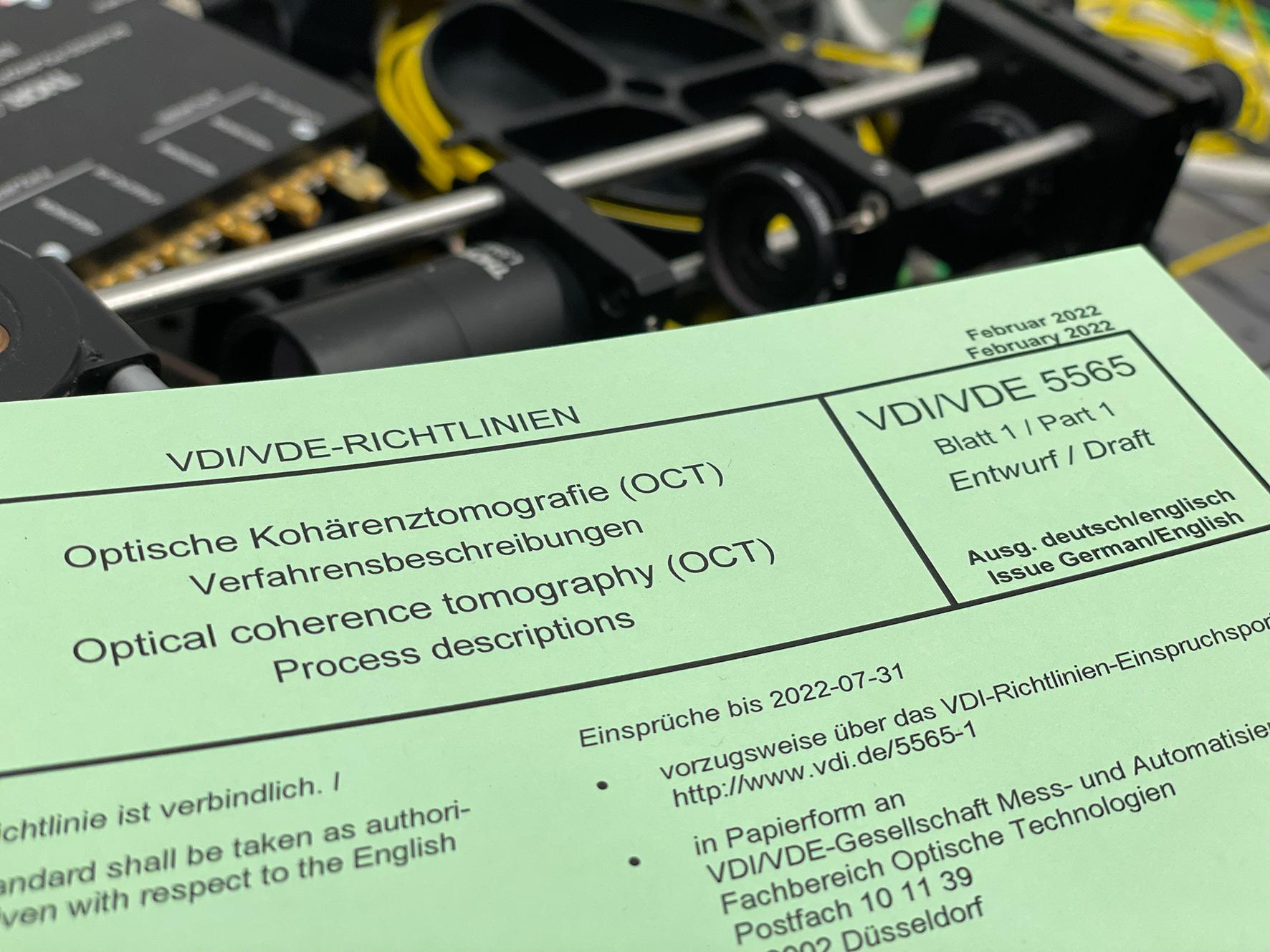Technical rules and regulations impart knowledge and promote confidence in optical coherence tomography
Optical coherence tomography (OCT) is a new imaging technique that generates high-resolution cross-sectional images of transparent and semitransparent media. It is used both in industrial metrology, for example in component monitoring, and in biomedical diagnostics, such as ophthalmology or tissue diagnostics. Companies and research institutes focusing on industrial metrology and medical technology also expect a wide range of other fields of application. They cooperate in the VDI/VDE-Gesellschaft Mess- und Automatisierungstechnik (GMA) in an expert committee on OCT and have now published a first draft guideline with standardized process descriptions.
Bringing together expertise from industry and research to jointly publish a standardized set of rules for OCT and thus open the way for further OCT application fields in the future - that is the goal of GMA's Technical Committee 8.19 "Optical Coherence Tomography". This is because the comparatively new measurement method has not yet been described in a generally valid manner, and various procedures and performance characteristics have not yet been standardized. Thus, the comparability of different OCT systems is not yet given and a wider dissemination is limited. This is to change through the guideline work of the technical committee: "Knowledge of and confidence in OCT are to be promoted through a general technical set of rules. To this end, we have now defined terms and measurement methods for performance parameters and described typical process variants as a first step," explains Niels König, head of the Production Measurement Technology department at the Fraunhofer IPT and chairman of the expert committee.
Non-contact and high-resolution imaging - from biomedicine to industry
Originally used in ophthalmology, OCT is a measurement technique based on short-coherent interferometry for non-contact and high-resolution imaging of tomographic cross-sectional images. It has a penetration depth of several millimeters and a resolving power in the single-digit micrometer range. In medical diagnostics, OCT can be used to examine organic tissue, such as tumor tissue, at a very early stage of disease, either intraoperatively or in vitro. But OCT is also used in industry thanks to its universal properties in material and defect testing, for example in plastic products. In the case of opaque materials into which the light cannot penetrate, for example metal, OCT is used for surface and distance measurement.
Now, the first work results of the new technical committee on OCT are available in the form of the draft guideline VDI/VDE 5565 Part 1. The draft describes the OCT procedures and defines the necessary terms. In order to reach as much of the OCT community as possible, the draft has already been published bilingually in German and English. The draft can be commented on by objection until July 31, 2022. After the objections have been dealt with, the valid guideline will then be published. The committee is already working on VDI/VDE 5565 Part 2 on "Signal processing and data evaluation". The metrological characterization of OCT systems is on the roadmap for further guideline projects.
For further information, please contact the GMA office:
VDI/VDE Society
Measurement and automation technology (GMA)
Erik Marquardt
Phone +49 211 6214-373
marquardt@vdi.de
www.vdi.de/5565
